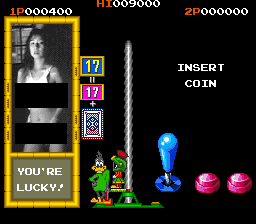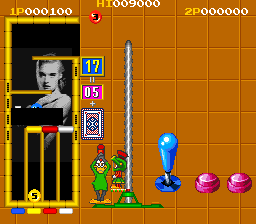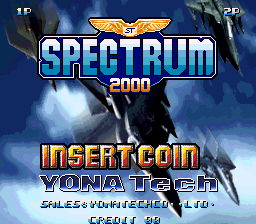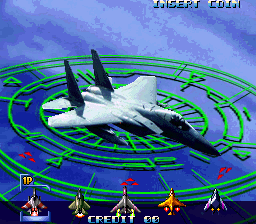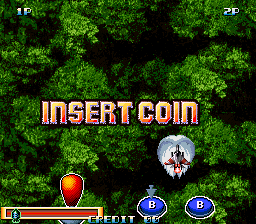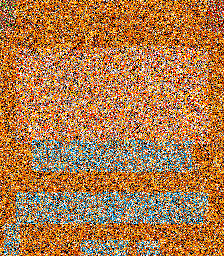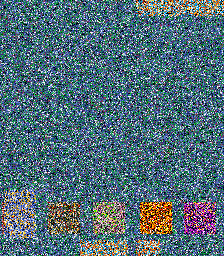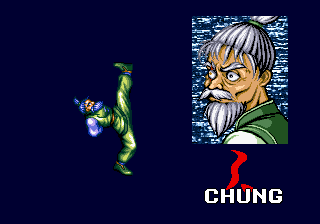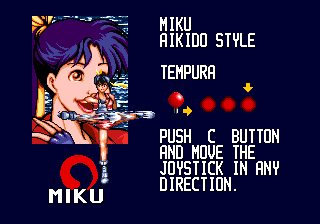
UME is the complete/combined version of the MAME / MESS project.
It’s always a little disappointing to have to post 3 UME updates in a row with no actual WIP news between them, but that’s the situation right now, I’ve not really made any changes worth doing an update about it, and progress elsewhere has been slow too if I’m honest.
0.153ex2 is built from SVN revision 30169
UME 0.153ex2 Windows binaries – 32-bit, 64-bit and all tools
UME 0.153ex2 sources
Here is the 0.153ex1 to 0.153ex2 SVN log
Also split mame/mess (non-ume) binaries of this revision can be found here
Points of Interest
The main addition of note here is support for Wyvern F-0, already extensively covered by Luca. It’s not really quite as rare of valuable as it’s hyped up to be, but it’s an interesting addition as it further shows the influence Namco’s Xevious had on the arcades, employing a similar air / ground bombing system (Taito had tried this previously with Fire Battle) As Luca mentions there are still a few issues with sprite colours, as you can see.


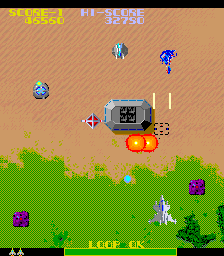
For UME / MESS users I’ve added the parsing of some additional ini files based on how the drivers are defined in the source. Drivers are defined with either a GAME( macro, a CONS( macro, COMP( or SYST( depending on what type of system they are. This information was previously unused, but the emulator will now attempt to parse ‘arcade.ini’ for anything defined as GAME. and ‘console.ini’, ‘computer.ini’ or ‘othersys.ini’ for each of the others. While this relies on things being properly defined in the source it will allow UME users who might want specific .ini options to be applied only to drivers that originated in MAME to create an ‘arcade.ini’ with those specific options in. Even if you’re not using UME the option will benefit MESS users who can use the computer/console.ini files for the same purpose.
system11 dumped a couple of clones, the most interesting being a Korean version of Kaneko’s ‘The Berlin Wall’ This version carries an ‘Inter’ license like the Korean version of Gals Panic and appears to be a fully legitimate version of the game licensed by Kaneko for the Korean market.
The set is also interesting because it uses the same character graphics as the ‘berlwallt’ clone set, but preserves the normal stage order. Interestingly it suffers from the same ‘COPY BOARD’ issue when you die / continue on world 4 and above that resulted in the ‘berlwallt’ set being marked as a possible bootleg. I’ve asked for system11 to check if this actually occurs on real hardware, because the board the set comes from is definitely original so we need to establish if it’s an emulation glitch (meaning we’re missing some way the game detects a bootleg board, or some way of hiding those sprites) or an oversight by Kaneko with these versions of the game. Luca also fixed a few bugs in the driver.



While on the subject of Berlin Wall, I find it a shame that ‘Wani Wani World’ never made it to the arcades, it’s a much more refined, much better looking, much more fun version of the game that was released on the Sega Mega Drive in Japan. (you can always give it a spin in UME, “UME megadrij waniwani”) I think the ‘RESET’ button on the MD emulation broke at some point tho, a shame because you need to reset the game 19 times to activate the cheat mode (and F3 resets too much of the system for that)
Kale has also been busy with improving the Model 2 emulation, although it’s still a long way from being correct or any kind of rival to ElSemi’s emulator.
Other than that a lot of the work done has been refactoring as usual, although a number of the small improvements are important, the Sega Master System timing tweaks that went in fixed a number of bugs I was seeing where screens were flicking that did not occur on real hardware (menu screens in Micro Machines for example – although there does seem to be a flickering line again on Fantastic Dizzy now) We’ve also seen work started on a long overdue cleanup of the MSX drivers.
A significant number of devices have had uninitialized variables cleaned up which should make things more reliable as uninitialized values can result in unpredictable buggy behaviour (like the Namco flipscreen issue we saw in 0.153)
A fair amount of work has also been done on more obscure systems in MESS, but you’d be better off checking the changelogs yourself for those if you want more details. A driver for the Xerox Alto 2 from Juergen is one such addition, but work was also done on the Goldstar FC-100, the Dick Smith Super-80, the NeXT systems and a number of others, each change inching them a bit closer to a working state. The MESS side of the code has been a hive of activity when it comes to these lesser known systems and it’s always good to see some devs of old getting a feel for things again with them!
Beyond that we’ve also seen attempts to repair the collateral damage caused by some of the other recent refactoring / device conversions / core rewrites such as the 0.153 regressions seen with the Cybiko.
















